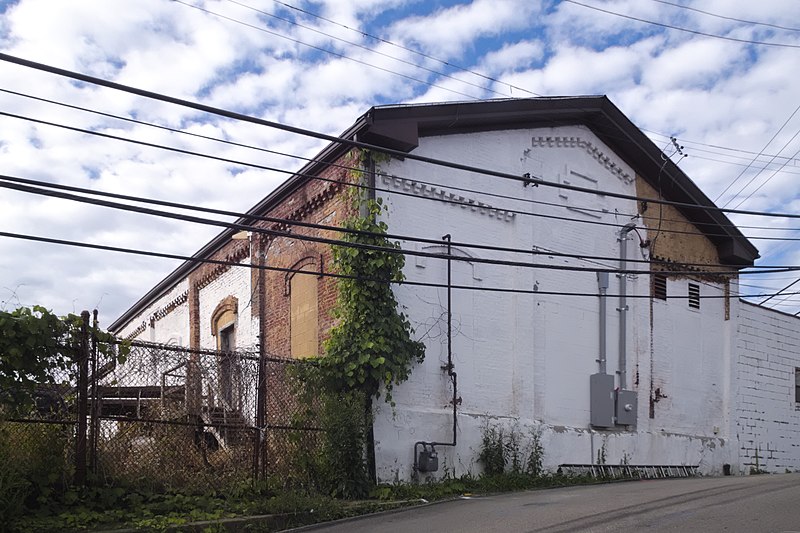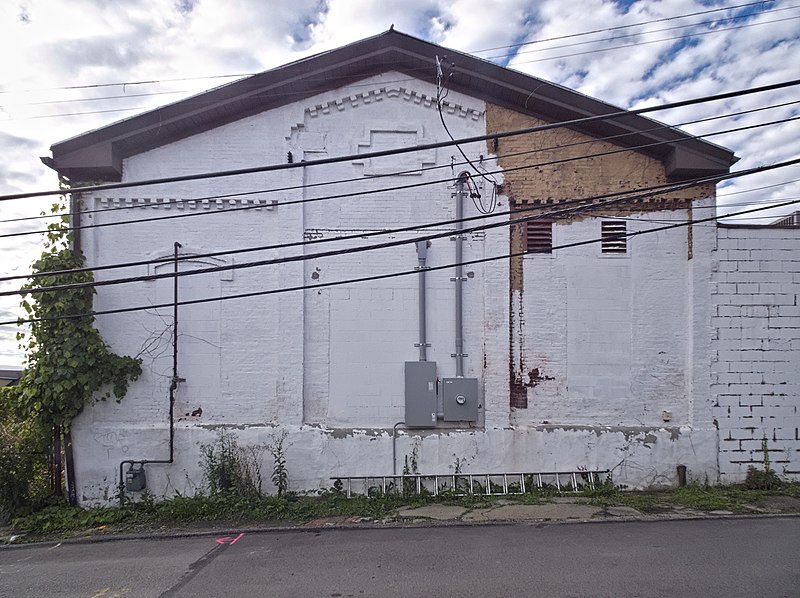
A Romanesque church whose immense chimney dwarfs its stubby little tower, this is probably the only church in the neighborhood still serving its original congregation.


Most Pittsburghers with an interest in local history know that there were many inclines operating in the city a hundred years ago. Few know that part of the Mount Oliver Incline is still here. The incline itself closed in 1951, and the stations are gone, but the power house, which was across Warrington Avenue from the upper station, still stands. It has been converted into a shop for a heating and air-conditioning contractor.


Map.

Just about every ugly thing that can happen to an old house has happened to this once-grand Second Empire mansion on the back end of Warrington Avenue. It has been sheathed in artificial siding. All the windows have been replaced with windows and doors in the wrong shapes. Almost all the trim has been removed (if you enlarge the picture, you can find a tiny remnant in the pediment over the front entrance). The porch has been replaced with treated lumber, which manufacturers assure us never has to be painted and therefore is always allowed to decay into even uglier colors than it was originally. The front entrance has been replaced with cheap doors from a home center.
Yet, with all that, there is still a pleasing symmetry to the house that gives it a kind of senescent dignity. At present, it stands in a nice working-class neighborhood where houses are worthless, or at least not worth enough to make any substantial work on this one profitable. But it has a magnificent view of the city, and if someone with a little money were to adopt it, it could be remade into an attractive single-family mansion again, or a more attractive apartment house.
Old Pa Pitt does not know the history of this house. On the Pittsburgh Historic Maps site, it first appears on the 1890 layer, suggesting that it was built in the 1880s. From then until 1923, it is marked as belonging to Mary L. Bayer or M. L. Bayer.

A particularly fine Art Deco design. Neighborhood telephone exchanges were put up all over the city, and the telephone company, which had all the money in the world, always made them ornaments to their neighborhoods. This one still belongs to the successor of the Bell Telephone Company.
Addendum: The architect was almost certainly Press C. Dowler. According to the Pennsylvania Historic Resource Survey Form for the Bell Telephone Company of Pennsylvania Western Headquarters Building, “Between 1935 and 1955, Press C. Dowler designed in excess of 60 buildings for Bell Telephone Company of Pennsylvania in the Pittsburgh region.”


